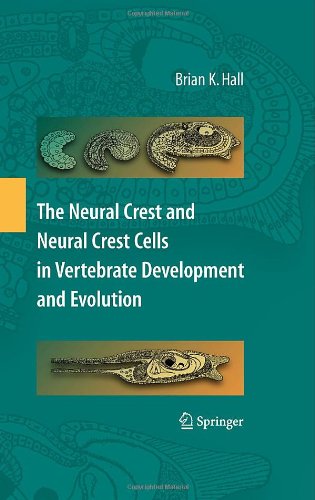

Most ebook files are in PDF format, so you can easily read them using various software such as Foxit Reader or directly on the Google Chrome browser.
Some ebook files are released by publishers in other formats such as .awz, .mobi, .epub, .fb2, etc. You may need to install specific software to read these formats on mobile/PC, such as Calibre.
Please read the tutorial at this link: https://ebookbell.com/faq
We offer FREE conversion to the popular formats you request; however, this may take some time. Therefore, right after payment, please email us, and we will try to provide the service as quickly as possible.
For some exceptional file formats or broken links (if any), please refrain from opening any disputes. Instead, email us first, and we will try to assist within a maximum of 6 hours.
EbookBell Team

5.0
80 reviewsThe evolution of the neural crest sheds light on many of the oldest unanswered questions in developmental biology, including the role of germ layers in early embryogenesis, the development of the nervous system, how the vertebrate head arose developmentally and evolutionarily, and how growth factors and Hox genes direct cell differentiation and embryonic patterning. In this new edition of his essential work, The Neural Crest in Development and Evolution, Brian Hall has provided an up-to-date technically and intellectually rigorous synthesis of knowledge of all aspects of the neural crest and of neural crest cells (NCCs). These ten chapters are organized into three parts: (I) The discovery, and developmental and evolutionary origins of the neural crest; (II) cellular and tissue derivatives of the neural crest; (III) and tumors and birth defects arising from abnormal NCCs. The genetic and cellular bases for the identification of NCCs as early as during gastrulation, for induction of the neural crest, NCC delamination, migration and differentiation — understanding of all of which has increased enormously over the past decade — are discussed in depth in Part I. The evolutionary origin(s) of the neural crest is examined through an analysis of fossils, and of cell types, genes and gene networks in extant cephalochordates (amphioxus) and in ascidians. Four chapters grouped as Part II examine all aspects of neural crest-derived pigment cells, neurons, skeletal, cardiac and tooth-forming cells, with emphasis on how and when subpopulations of NCCs are specified and how their differentiation is controlled. The two chapters in Part III revisit NCC development in the context of tumors (neurocristopathies) and birth defects, with emphasis on genetic pathways, regulation of cell populations, and whether NCCs can be considered to be stem cells.
About the Author:
About the Author: Dr. Brian K. Hall has devoted much of his career to the study of the evolution and development of neural crest-derived skeletal tissues. He is a University Research Professor Emeritus at Dalhousie University in Halifax, Canada, a Visiting Distinguished Professor at Arizona State University in Tempe, a Fellow of the Royal Society of Canada, and a foreign fellow of the American Academy of Arts and Sciences.